Ontario courts have recognized that contingent assets such as a spouse’s interest in a trust are considered property, and are therefore taken into account when determining each spouse’s net family property. Valuing trusts in family separation and divorce can be complex and time-consuming which, if not managed efficiently, can result in legal battles that go on and on and leave everybody dissatisfied. This paper looks at the difference in valuing discretionary and non-discretionary trusts.
What are discretionary and non-discretionary trusts?
A trust is a legal vehicle set up when a person transfers income or property into the trust for the benefit of a beneficiary(ies), with specific directions to the trustee (the person who administers the funds in the trust) on how to distribute the income or property to the beneficiary(ies). There are two types of trusts, discretionary and non-discretionary.
A discretionary trust is a trust in which the trustee has complete or partial discretion as to when and how the income or property is distributed to the beneficiary(ies).
A non-discretionary trust, also known as a fixed interest trust, is a trust in which the trustee, having no decision-making powers in how the distributions are to be made to the beneficiary(ies), must follow the terms of distribution set out in the trust instrument.
Discretionary and non-discretionary trusts are valued using different approaches[2].
Valuing a Non-discretionary Trust
To value non-trust assets, we use the “fair market value approach”, which is the market value based on what an unpressured buyer in the market would pay. However, in their nature, trust interests cannot be sold on the market and so courts have relied on the “value-to-owner” approach as a fair evaluation of value. The value-to-owner approach is the price that the owner of an asset (in this case, the beneficiary) would hypothetically pay to not be deprived of it. Slightly different rules will apply if the trust is made up of capital interest or income interest.
Valuing a Discretionary Trust
Discretionary trusts are more complex to value. There is currently no definitive method to value a discretionary trust but three methods have generally been recognized by courts[3]:
- by evaluating the likelihood of the beneficiary receiving benefits by examining the purpose of the trust or the history of past receipt;
- using a “notional pro rata” approach that divides the interest by the number of beneficiaries at the date of valuation (ie. if there are two beneficiaries, each are assumed to have a 50 per cent interest, and if there are 10 beneficiaries, each are assumed to have a 10 per cent interest); and
- applying the “if and when” approach that allows the spouse with no interest to receive a portion of the beneficiary’s interest when it is distributed in the future.
Valuation is not a precise science. The Family Law Act states that valuation relies on the individual assessment of the factors in each case to arrive at a fair and equitable conclusion. In mediation, the mediator will guide a divorcing couple by a) identifying the context and special circumstances of their situation, and b) managing the problem-solving dynamic. In matters of trust valuation, a mediator will enable the couple to manage the steps towards finding a fair resolution of the value to the trust interest, from gathering the proper documents to finding the right experts to complete the valuation. Because of the difficult nature of valuing trusts, a cooperative process reduces the likelihood of endless and costly legal battles and facilitates constructive communication.
A successful mediation results in a win-win situation for all parties involved.

 Menu
Menu